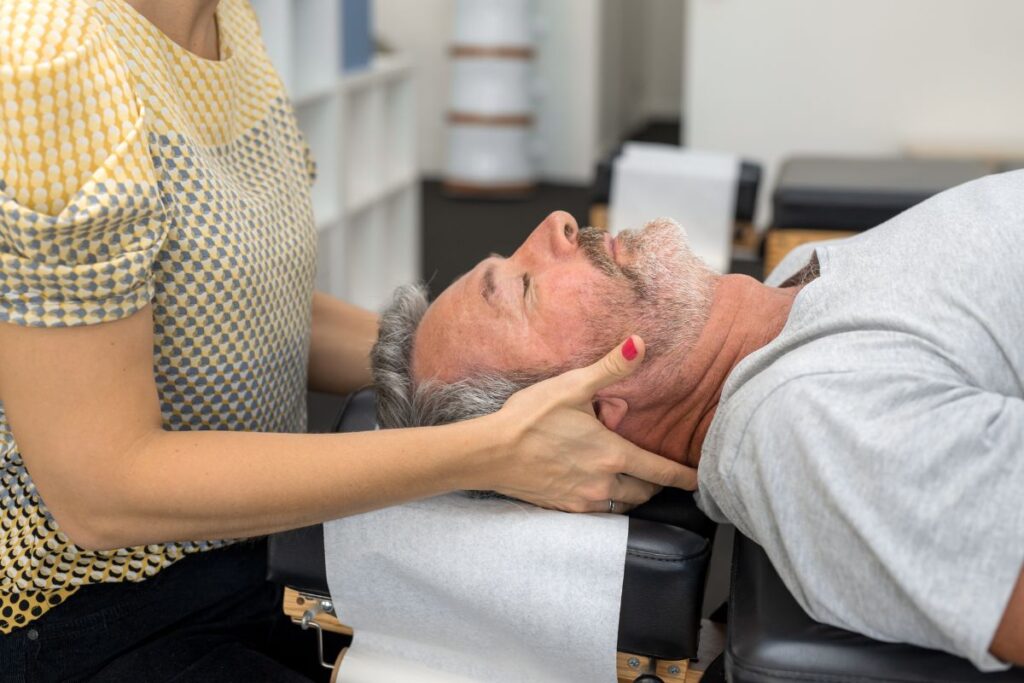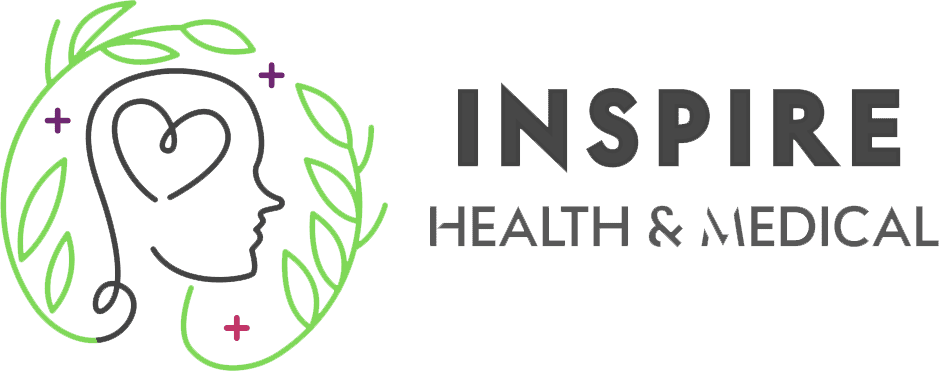What is osteopathy and who can it help? We explore the benefits of this effective manual therapy to facilitate non-invasive, drug-free healing of the body.
What is Osteopathy?
Osteopathy is a holistic, hands-on treatment approach which addresses a wide range of musculoskeletal dysfunction.
The discipline of Osteopathy takes a “whole body” approach and considers the interrelationships between the nervous system, musculoskeletal system, circulatory system and lymphatic system.
Osteopathy assesses if all components are functioning correctly and how dysfunction in one area can impact others.
The key guiding principles of Osteopathy are:
- A person operates as a unit of body, mind, and spirit
- The body can self-regulate and heal itself
- The body’s structure and function are interrelated and condition each other
Osteopathy aims to assist the body’s natural healing process by promoting the mobility of tissue, the health of the fascia and the circulation of all fluids.
What is osteo good for?
Working with an Osteopath to alleviate pain and discomfort overall can lead to improved body function, more restful sleep, increased energy and mood, and improved quality of life.
Reasons to seek treatment from an Osteopath include:
Neck and lower back pain
Neck or low back pain are two of the most common reasons to see an Osteopath.
This pain may be chronic or have come on suddenly and originates from the nerves, joints, muscles and bones in the spinal region. Pain can be dull, burning or feel like a sharp piercing sensation that radiates to other areas like the hands, legs or feet or stay in one place. Weakness, tingling, and numbness often accompany neck and lower back pain.
In addition to using a ‘hands-on’ approach to treat the root cause of pain Osteopaths will also address movement imbalances with simple exercises to restore correct function.
Muscle Strains
It is easy to injure a muscle or tendon when exercising, playing sports or performing a physical task, such as lifting something heavy.
This type of injury is often due to dysfunctional body mechanicals where the muscle or tendon is placed under excessive stress than it can handle. This results in a tear.
An Osteopath can help address this type of injury as quickly as possible to shorten rehabilitation time and help prevent a similar injury in the future.
Sciatica
Sciatica presents with nerve sensitivity in the back and leg which occurs when pain moves along the sciatic nerve. The sciatic nerve travels from the lower spine, through the pelvis, and down each leg to the feet.
Medication may offer relief by masking the pain but it fails to address the root cause – spinal dysfunction.
Osteopathic treatment to reduce the pain of sciatica can use massage stretching, manipulation or dry needling to address spinal dysfunction.
Arthritis
Many people come to see an Osteopath for relief from rheumatoid arthritis or osteoarthritis. Rheumatoid arthritis is an autoimmune response where the body triggers an inflammatory response in a joint.
Osteoarthritis relates to the inflammation of the joint caused by natural ‘wear and tear over the years. Osteopathy can help ease pain and increase mobility with both conditions by using Osteopathic techniques to increase joint space, articulate tissue and relieve muscular tightness
Repetitive strain injury (RSI)
Repetitive strain injury (RSI) generally presents in the forearms, elbows, wrists, hands, neck or shoulders. RSI is caused by repetitive movement and overuse which leads to pain in the tendons, muscles and nerves.
Office workers who spend significant time sitting at their desks each day are at high risk of developing RSI due to overuse of computer/laptop keyboards and telephones.
Vertigo
Vertigo and feeling dizzy can have a detrimental impact on the quality of everyday life. Symptoms can present for any number of reasons – issues with blood pressure, medications, inner ear infections, neck nerve issues, or a virus.
Gentle cranial Osteopathy techniques and improving balance with hands-on treatment can assist in getting you back to living life without dizziness.
Pregnancy discomfort
With the incredible change the body goes through during pregnancy, it’s not surprising expectant mums can experience a range of discomforts – particularly in the third trimester.
The musculoskeletal system is impacted by changes in spinal mobility, posture, and muscle imbalances. Working with pregnancy-safe techniques, an Osteopath can help to increase comfort, reduce pain, and prevent future complications.
What to expect when seeing an Osteopath
Assessment
In the first session, your Osteopath will perform a detailed assessment of your physical history and current symptoms.
This thorough assessment takes into account past injuries, surgeries, scars, and medication.
Focus then moves to your current symptoms which may include various types of movement tests and examinations:
- Test the range of motion in any painful or affected areas
- Examine your body mechanics to observe any compensatory changes
- Spine examination pronounced asymmetries
- Ask you to move your body in various positions and directions to feel the underlying bone structure and assess mobility concerns
This information gives the Osteopath an understanding of your body’s mechanical function to make a diagnosis and develop an appropriate treatment plan.

Manual techniques of Osteopathy treatment
Osteopaths use hands-on, non-invasive and drug-free therapy to correct the musculoskeletal framework and promote healthy circulatory systems to target pain and reduce the risk of future injury.
Examples of osteo treatment techniques include:
Cranial Osteopathy
The technique involves gently applying pressure along the head and spine manipulating the bones and tissues of the skull to release pressure. Cranial techniques may lead to a better quality of sleep, improved circulation and increased feelings of well-being overall.
Joint Mobilisation
Your Osteopath will manually mobilise an affected joint to reduce pain, increase the range of motion and improve the quality of ‘Arthrokinematics’ – the movement of joint surfaces. This is also known as the Functional technique.
Soft Tissue Massage
Soft tissue massage decreases tension in muscles, improves circulation (both blood and lymph), encourages increased flexibility, and can help you get a more restful night’s sleep.
Functional Dry Needling
The dry needling technique is particularly beneficial to alleviate lower back pain as it allows deep access to tense muscles.
Your Osteopath will insert a fine filament needle into specific areas to activate trigger point pain and release muscle tension.
High-velocity Low Amplitude (HVLA)
The ‘popping’ noise you might hear during your Osteo treatment is due to the HVLA technique which places a joint under tension in a specific position.
When your Osteopath applies a controlled force to the area it creates cavitation – the separation of the surfaces of a synovial joint leading to a reduction in joint pressure. Cavitation causes the popping sound.
Kinesio Taping
Kinesio taping is a form of therapeutic taping to boost fluid circulation, minimise muscle spasms, reduce pain, and overall encourage faster healing.
Stretching
Therapeutic stretching helps release the muscle to relieve tension and musculoskeletal issues and also improve joint stiffness – the feeling that the motion of a joint is limited.
Counterstrain
When a muscle is tight, it’s like a stretched elastic band and can be extremely tender.
The technique of counterstrain assesses the tenderness of the area using a pain scale. Your Osteopath will then gently place you in the most comfortable position to achieve the greatest pain reduction, noting changes in pain throughout the treatment
Lymphatic pump techniques (LPT)
Lymphatic pump techniques (LPT) are a set of manipulative techniques designed to enhance the flow of lymph through the lymphatic system.
The movement can be applied to the thoracic cage, abdomen (splenic and liver pumps), feet and legs (pedal pumps) and can improve swelling and reduce / treat inflection.
What is the difference between physiotherapy osteopathy and chiropractic?
Some of the same mobilisation and manipulation techniques are used across physiotherapy, osteopathy, and chiropractic practices and all are concerned with musculoskeletal complaints.
However, there are differences between the three disciplines.
In short, Osteopathy takes a whole body, holistic approach to treatment, physiotherapy focuses primarily on the area of pain / discomfort, and chiropractic specialises in spine dysfunction.
We’ve covered what osteopathy is and how it works, so let’s take a closer look at Physiotherapy and Chiropractic.
Physiotherapy
Physiotherapists are experts in the structure of the human body and its movement. They work with people of all ages to treat a broad range of health conditions including sports injuries and musculoskeletal conditions as well as chronic health conditions such as diabetes, obesity, osteoarthritis and stroke. Allied Health Professions, Australia
While Osteopathy takes a whole-body approach (biopsychosocial care) to treatment, in general, Physiotherapy focuses on treating the specific area causing trouble.
For example, ankle sprains are one of the most common sporting injuries that a Physiotherapist will see. They may treat this injury focusing on the ankle region only. Whereas, an Osteopath may consider other things such as posture or circulatory issues to facilitate faster healing.
Chiropractic
Evidence-based chiropractic covers the diagnosis, correction and prevention of musculoskeletal system disorders with a specialisation in the spine.
The practice of chiropractic focuses on the relationship between structure (primarily the spine) and function (as coordinated by the nervous system) and how that relationship affects the preservation and restoration of health. Chiropractors’ Association of Australia.
In addition to spinal and neck manipulations, Chiropractic is most known for, the profession also includes treatment and rehabilitation by other physical modalities and exercise.
Reach out to our team at Inspire Health & Medical to book a consultation with one of our Osteopathic practitioners.





